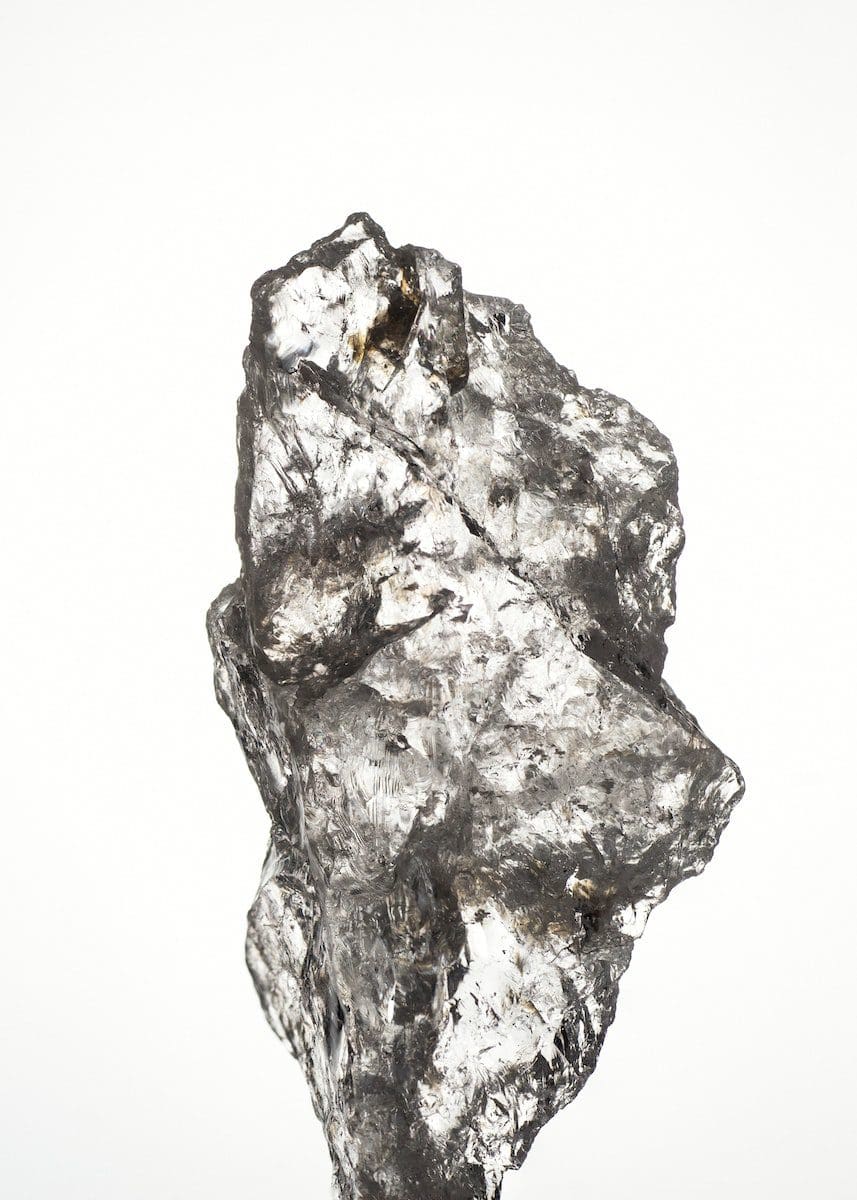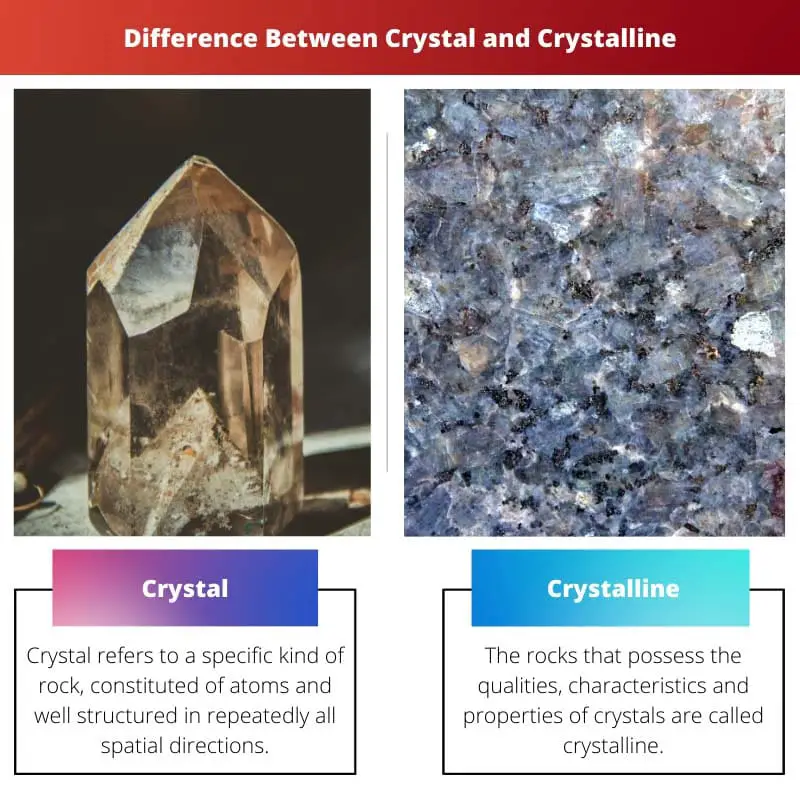The study of crystals is done extensively in earth sciences. These two words are used in different fields of observation or research and are parts of speech. This article will detail the difference between crystal and crystalline in detail.
Key Takeaways
- Crystal refers to a solid material with a regularly repeating atomic structure and a definite shape and edges, while crystalline refers to a material of crystals.
- Crystals are homogeneous, while crystalline materials can have different types of crystals and grain boundaries.
- Crystals can be naturally occurring or artificially created, while crystalline materials can also be amorphous or polycrystalline.
Crystal vs. Crystalline
The difference between crystal and crystalline is that Crystal refers to a specific kind of rock, constituted of atoms and well structured in all spatial directions. At the same time, the rocks that possess crystal qualities, characteristics, and properties are called crystalline. Also, the term crystal is a noun, whereas the term crystalline is an adjective.

Crystal is a noun. The term crystal has its origin in a Greek word. Crystal refers to a specific kind of rock consisting of atoms and well structured in all spatial directions. “Krystallos” is the base word from which crystal has been derived.
The crystalline term has its origin in the Latin word. The rocks that possess the qualities, characteristics and properties of crystals are called crystalline. “Crystalline” is the word from which the term crystalline has been derived.
Comparison Table
| Parameters of Comparison | Crystal | Crystalline |
|---|---|---|
| Parts of Speech | Crystal is a noun. | The term crystalline is an adjective. |
| Origin | The term crystal has its origin in a Greek word. | The term crystalline has its origin in the Latin word. |
| Definition | Crystal refers to a specific kind of rock, constituted of atoms and well structured in repeatedly all spatial directions. | The rocks that possess the qualities, characteristics and properties of crystals are called crystalline. |
| Base word | “Krystallos” is the base word from which crystal has been derived. | “Crystalline” is the word from which the term crystalline has been derived. |
| Use | Crystals can only refer to rocks where the atoms are arranged in a specific direction. | The use of crystalline is not limited to any field. It refers to something distinct or clear. |
| Refer to | A crystal is a singular noun and refers to only one crystal. | A crystalline material may contain many tiny crystals bonded together. |
What is Crystal?
The term crystal is used extensively in geology or earth sciences. It refers to a solid element that bears ions or atoms in a well-structured manner. However, the atoms or ions need to follow a repeating fashion which extends up to all directions.
The regular arrangement of crystals in a crystal makes them sturdier than other matters, such as fluid and gas. It originated from the word “krystallos,” which means crystal, rock, or ice.

What is Crystalline?
The crystal-like rocks are considered crystalline. Although, this term is mainly used as an adjective. Crystalline describes any mineral, object, or item that possesses all of a crystal’s qualities, characteristics, and properties.
Any clear, transparent something constituted of crystals is referred to as crystalline. The crystalline objects are characterized by having a sharp outline.

Main Differences Between Crystal and Crystalline
- Crystals can only refer to rocks where the atoms are arranged in a specific direction. But the use of crystalline is not limited to any field. It refers to something distinct or clear.
- A crystal is a singular noun and refers to only one crystal. However, a crystalline material may contain many tiny crystals bonded together.




